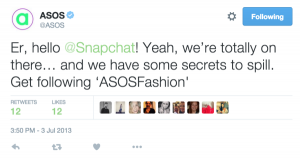Any business wanting more traffic should have some type of SEO plan in place. The problem is that there are a LOT of shady companies out there promising SEO results. Plus, there is a lot of content out there telling you to do the wrong things. I want to cover five tactics you should avoid when planning or working with an SEO company.

1. Content stuffed with keywords
If a company you’re working with is recommending that you include tons of keywords in your blog content, fire them immediately! That was the tactic over a decade ago. You write a piece of content and stuff the heck out of it with keywords.
We don’t know exactly what Google looks for in content, but this definitely isn’t it! They want their users (the people searching) to have the best experience possible on your site. And the reason is because then that means their search results are super relevant. I do suggest you pick a topic and write content around that topic. Seeing what people are searching for is always a good idea and you can use the keyword planner for research.
2. The more content, the better
If you’re producing high value, killer content, then pump it out at your heart’s desire. But if you’re putting out content just for the sake of SEO purposes, then you are doing it all wrong. Google wants to see you contributing to the web. They do want you to put out content, but it needs to be good — like, really good.
Good content gets shared and people naturally link to it. Again, we really don’t know exactly what Google is looking at, but I can guarantee that they want to see if your content gets some social shares. An SEO strategy tactic I’m shooting for this year is to produce onsite blogs posts that are 2K words long.
3. Buying links
Eekkks! This one makes me cringe. There’s a site out there called Fiverr where you can buy anything for five bucks. You can find some great buys on there like copy-editing, but unfortunately, if someone sees “5000 SEO links for $ 5,” they might think it’s a great deal. If your site is getting links from these “link scheme” type sites, you can get penalized. And getting penalized is not fun.
I’ve worked with a few clients that were penalized and we had to clean up their link profile. It’s not easy and takes a lot of time and money if you’re paying someone to do it. Natural backlinks are still a good indicator that your site has quality information on it.
4. Stuffing meta description and title tags
Two onsite optimization techniques are to create unique title and meta description tags. Like all other SEO tactics, we don’t know how heavily Google weighs in on this, but I recommend you still optimize these tags. But do not stuff these puppies with keywords.
Each page should have a meaning and purpose on your website. Your About page is to tell your customers what your site is about. A blog post about unclogging a drain is about exactly that. The title tags should explain these pages. They should also be unique and relevant because it’s what the search person sees on Google. If they click on your site and then hit the back button really quick because it’s not relevant, that’s not good! It’s sending a signal to Google that your page does not have quality, relevant content. This is a neat tool to help with your meta tag lengths: https://moz.com/blog/new-title-tag-guidelines-preview-tool.
5. Duplicate and thin content
Google does not like when a website owner posts a blog post on their site and then posts it dozens of times around the web. Each piece of content you produce, whether it’s for your own site or a post on someone else’s site, should be completely unique. An old tactic was to create a post and then post it on article (ezine) type sites and spam the heck out of the web.
And don’t even think about pulling content off someone else’s site and then putting it on your own. That’s called plagiarism. Not only could you get sued for this, it also hurts your rankings.
A good practice is to shoot for a few hundred words per page. Of course, this might not work for all your content like your contact page, but that’s totally fine. When content is thin (a low word count), Google won’t get a ton of value out of it when it’s crawled. Plus, your visitors might be left wanting more. You should always write for the user, not for Google. Break the content up into bullet lists and make sure to add some pictures and graphics.
When you get a penalty or a big hit in rankings from Google, it is not fun. It could be very costly to recover from the loss in traffic, plus you’ll need to pay someone to help clean up your mess. Don’t try to cheat the system and always think about the user first. Even if you only get five visits a day, if your content is good and your site is in order, those visitors might convert into customers!
Digital & Social Articles on Business 2 Community(77)







